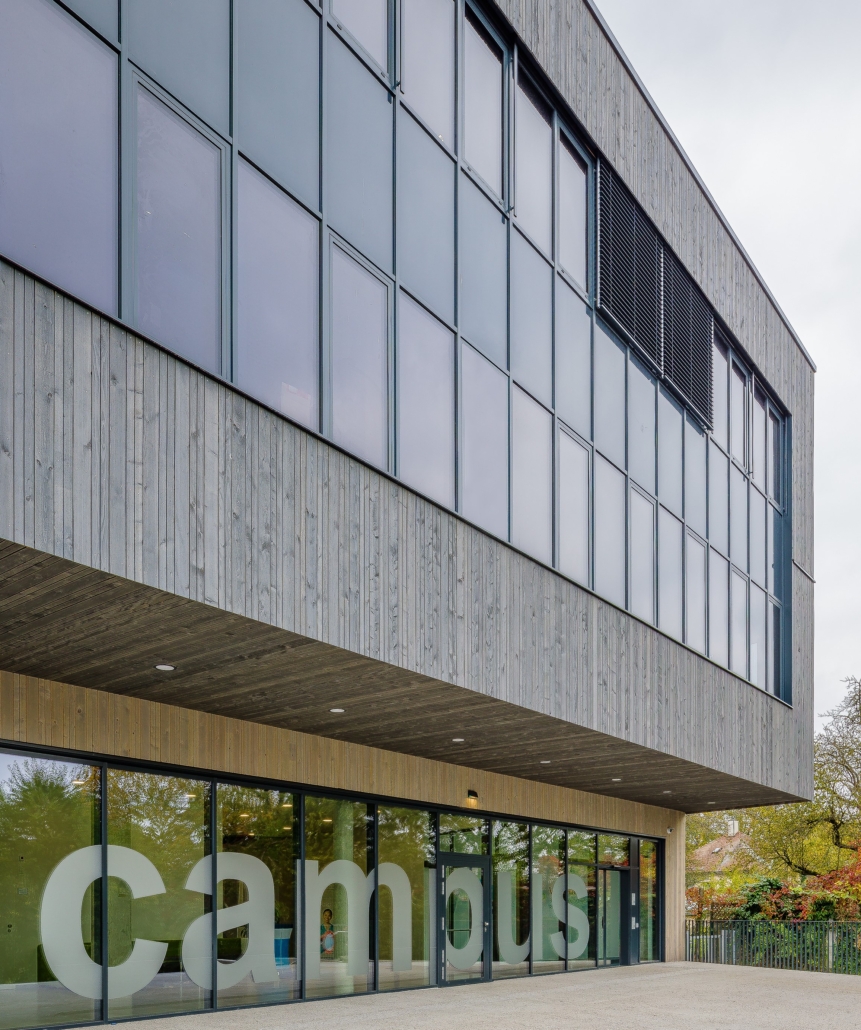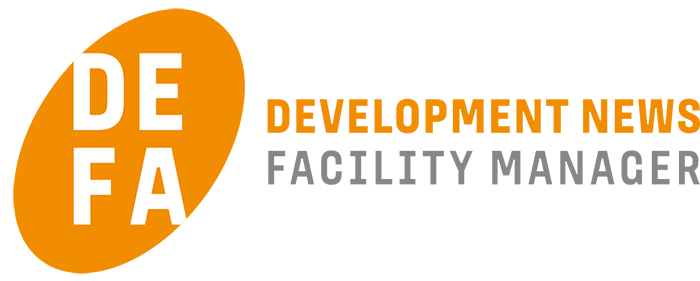DELTA celebrates 30 years and wants to bet more on sustainability
DELTA was founded in the Austrian city of Wels, where its headquarters are still located. In total, DELTA Group has 12 branches in four countries with more than 350 employees, where about 50 of them comprise the Czech-Slovak team.
 Although the historically first branch in the Czech Republic was purpose-built in České Budějovice, where DELTA accompanied the construction of a local shopping centre, today, DELTA is represented in the Czech Republic by their offices in Prague and Třebíč. Their CEO, Erik Štefanovič, told us more about the company’s past and present.
Although the historically first branch in the Czech Republic was purpose-built in České Budějovice, where DELTA accompanied the construction of a local shopping centre, today, DELTA is represented in the Czech Republic by their offices in Prague and Třebíč. Their CEO, Erik Štefanovič, told us more about the company’s past and present.
Is it only the Czech branch from within Delta Group that celebrates its anniversary?
In total, DELTA has been around for an impressive 47 years, which I hope shows that we do what we do well. That is why we have been working in the turbulent construction market for so long, which makes me very happy. When it started 30 years ago, it started like with many other companies. The Austrian holding company decided to expand their operation to other interestingly developing markets, and the decision fell on the Czech Republic. It was then that I joined the Austrian headquarters in Wels. Shortly after that, we agreed that I would transfer to the Czech Republic and start developing projections for the Czech market as the first employee.
What was it like at the start?
The Czech Republic has always had a strong tradition in industry, and strong growth and interesting trends unfolded in 1993 even here. That is why the Czech DELTA was also very much tied to industry. We worked for brands such as Magna, Fischer, Mann Hummel, dm drugstore, etc. The trend in the area of shopping and entertainment was also changing greatly, the first shopping centres connected with entertainment were being built, so we also worked on projects such as Europark Prague, the network of ASKO furniture stores, STOP SHOP, Möbelix, Billa, Kaufland or the gradual development of the CineStar multiplex network. These were the foundations that were actually created in the Czech Republic. It was necessary to create an infrastructure of – let’s say – jobs and at the same time an infrastructure for shopping. So, our first projects were mostly 50% industry and 50% shopping. Our portfolio consisted mainly of larger shopping centres in combination with industry and administrative buildings. Today, we have already moved further and head towards the construction of buildings for the health sector, construction in the field of education, culture, sports and housing complexes.
What was the sort of important milestone during those years?
From my point of view – as well as Czech DELTA’s point of view – it was the Europark in Štěrboholy in Prague. It was at the beginning of the operation of the Czech branch of DELTA, when we were entrusted with the international project management of this shopping centre, at that time one of the largest ones. What was also specific was that the client did not want to work with a general contractor, so we managed around 60 international companies during construction then. We had to coordinate them so that the shopping centre could be built. We learnt a lot from this and moved significantly forward. Subsequently, we built another shopping centre in Hradec Králové. It was the period when we started to grow, and our small team of five suddenly doubled and over time we got to the present form. The Czech-Slovak team that I lead now has almost 50 people who are now active in the local market.
 You are talking about the Czech-Slovak company. How does it work in today’s conditions?
You are talking about the Czech-Slovak company. How does it work in today’s conditions?
I am the manager of the Czech and Slovak branches, each of which is a limited company, and they work very closely together. Our colleagues are often experts in a particular field, which means that some Slovak employees, for instance, work on Czech projects and vice versa, because they are simply better at it. That means that we complement each other. And I believe that this is the great strength of our company, the interconnectedness of competences and at the same time the diversity of experience from individual markets.
Was Europark the only milestone?
Certainly not. One of the other important milestones was the fact that we started modelling buildings in BIM at a very early stage. Ten years ago, we already saw that there was a perspective in BIM and the overall digitization of construction processes for the future, so we tried to gather experience very early on. We did it – with exaggeration – almost secretly, because clients often did not even know that we were modelling the project in BIM at the same time. At that time, we were actually learning how to handle the software and we were gathering experience, which was painful in the beginning. There was nothing like it in the market, we had to prepare everything ourselves. Today, there are element libraries where almost all the necessary elements are available. It was very challenging back then, but we gained a huge lead. And it is precisely this experience with BIM that we are now able to make meaningful use of it for investor’s benefit when designing buildings. And I think that this new way of designing projects will represent a significant change in the future. Collecting and preparing the right data will make it possible for us to be able to build truly smart cities in the future and be able to connect individual objects really effectively.
What do you consider the advantage of BIM?
One of the main advantages of BIM I perceive is its absolute transparency, interconnectedness of information, and therefore also a change in communication for all participants. Including the elimination of errors, inaccuracies and the maximum efficiency of all processes within the entire team, from the architectural concept to final building approval and with this associated issue of passing information to the building manager or facility management. And if we go even further, BIM can also show us accurate residual sales value of the material and also provide us with a lot of other available information, for instance in terms of the building’s energy efficiency, which brings a huge number of benefits both to the investor or the owner of the building. This data that we collect about the project will help us to approach various processes in a much more meaningful way in the future.
But it wasn’t always rosy in those 30 years, was it?
The beauty of construction is that there is always something going on. A field that is constantly developing, innovating, we are constantly experiencing changes and we certainly cannot rest on our laurels. Last year, we experienced challenges related to the lack of building material and how to optimize all subsequent processes and how to mitigate the emerging delay as effectively as possible. We expect that some materials will become less available even in the future. It is related to the behaviour towards our planet. That is why, in a few years’ time, we will be forced to focus more on recycling materials, and BIM can help us very effectively in this as well. The BIM model will contain information about a similar building that is destined for demolition, so it will be possible to buy and recycle it. We have to change our thinking and learn how to do it differently. The very power of data and information is what I consider a huge advantage. Artificial intelligence will help us in their evaluation. Nevertheless, we still lack cooperation because we are still very wasteful. Cities have certain needs, but we don’t know if we can meet those better because we don’t have enough information. In the future, I would like for the information to be available and for us to use it better for greater energy efficiency, population health and overall climate protection.
 We get to the present now. What does the company structure look like today?
We get to the present now. What does the company structure look like today?
About 10 years ago, there was a change in management in our company. The original founding management in Austria left and sold the company to its successors. There were in particular two of the three founders who left the company. One wanted to continue with us and stayed; 10 managers were given the opportunity to buy a share in the company, so we became co-owners of the new company. We had plans, which of course included the growth of the company, support, development in a sustainable direction, etc. Our mission is – simply put – to create a better world, and we try to enthuse our colleagues and investors in this way as well. When we took DELTA Group over in the new ownership structure, there were about 120 of us. Currently, DELTA Group has grown to more than 350 colleagues.
What projects make you happy?
I am pleased that in recent months, I have felt investors and clients’ great effort to change their thinking. They are beginning to realize that there is time for some change. The progress is slow, but noticeable. Years ago, we set ourselves the goal that at least one element in each project should be green – and now we are really succeeding, this also being thanks to the fact that the clients are changing their approach.
What else could help it?
It is necessary to establish a role model system, which means that the biggest players – ideally the state, but also the public sector, especially large developers whose projects are more visible and who often invest huge amounts of money – should represent the role model for others. This is what I like in Austria, for instance, where we recently opened a student campus project within the hospital area in Ried. The investor decided for maximum sustainability, and together we created an inspiring model for the neighbourhood and (not only) young people, and that is really important.
What are your future plans?
Now, we would like to become really profound on sustainability. Over the past year, we have brought over 30 specialists from all branches of our group from across all four countries into one interdisciplinary team, which is in charge of sustainable development. We are moving towards consulting in the field of taxonomy, ESG, we are preparing our own certification of buildings, etc. We are also trying to develop actively in this direction in the Czech Republic. Our aim is for clients to think about the project in a different way from the beginning – and I see a big opportunity in that.
Do you have any specific examples?
For instance, last year, our group decided that, starting this year in Austria and from next year also in our country, we will not purchase new cars with a combustion engine, so the entire company fleet will consist of only electric cars. So, this is where even our Czech team will have to change their way of thinking. I think that our responsibility to reduce our carbon footprint will not only be required by legislation but will also be generally expected from our clients and partners. I really hope that Europe will become the model for others.




Leave a Reply
Want to join the discussion?Feel free to contribute!